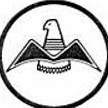-
Posts
11,926 -
Joined
-
Last visited
-
Days Won
163

Shadrach replied to N6230U's topic in Vintage Mooneys (pre-J models)

Shadrach replied to wombat's topic in Miscellaneous Aviation Talk

Shadrach replied to wombat's topic in Miscellaneous Aviation Talk

Shadrach replied to N6230U's topic in Vintage Mooneys (pre-J models)

Shadrach replied to N6230U's topic in Vintage Mooneys (pre-J models)

Shadrach replied to mhrivnak's topic in General Mooney Talk

Shadrach replied to SilentT's topic in General Mooney Talk

Shadrach replied to AndreiC's topic in Vintage Mooneys (pre-J models)
We have placed cookies on your device to help make this website better. You can adjust your cookie settings, otherwise we'll assume you're okay to continue.